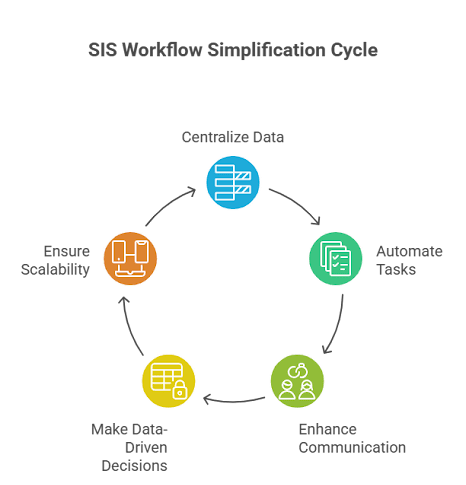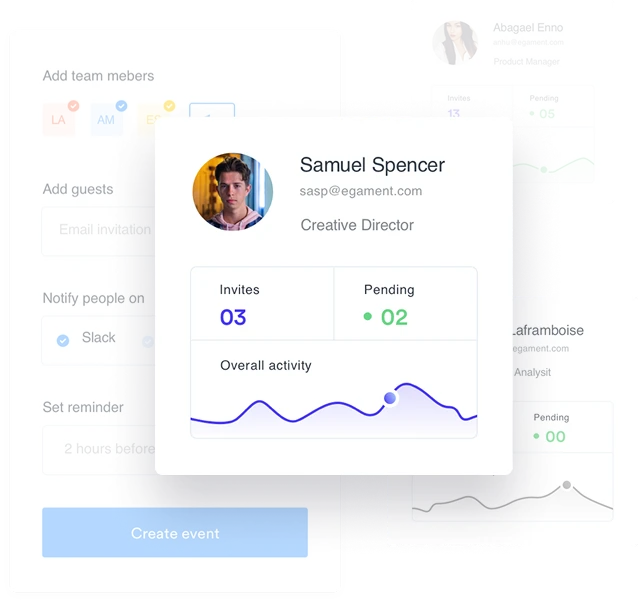Introduction
Did you know, according to a report, higher education administrators spend nearly 40% of their time on manual, repetitive tasks such as paperwork, scheduling, and reporting?
https://simplyflows.com/time-wasted-on-repetitive-tasks-is-40-percent/
This not only drains valuable time but also leaves little room for strategic initiatives that could improve student experiences and institutional growth.
Now imagine an environment where routine tasks like admissions, attendance, grading, and reporting run seamlessly in the background—allowing administrators to focus on decision-making, innovation, and student success. This is where a Student Information System (SIS) steps in as a game-changer.
Managing a higher education institution is far from simple. From juggling student records across multiple campuses to coordinating faculty schedules, administrators often face overwhelming complexity. Moreover, with rising student expectations for digital-first experiences, traditional manual processes are no longer sustainable.
Without the right tools, administrators encounter:
This is why institutions worldwide are increasingly adopting student ERPs with robust student data management capabilities to simplify operations.

Rather than juggling spreadsheets and disconnected systems, an SIS unifies admissions, attendance, grades, fees, and every student record into one reliable, centralized platform. This reduces errors, improves accessibility, and saves countless hours otherwise spent on manual updates.
Admissions officers no longer need to manually process thousands of applications. With SIS, tasks like application tracking, document verification, and communication can be automated. Similarly, features like automated attendance tracking and AI-generated reports help administrators save time while reducing human error.
Also Read: To learn more about how the attendance management system automates the process and saves a major chunk of time for the staff.
SIS platforms often come with integrated portals and mobile apps for students, faculty, and parents. This enables faster communication—be it sending fee reminders, exam schedules, or urgent notifications. In addition, a centralized communication system minimizes confusion and fosters greater transparency throughout the institution.
With graphical dashboards and real-time analytics with insightful reports, administrators can monitor student performance, financial health, and institutional KPIs at a glance. These insights empower leaders to make informed decisions that directly impact academic outcomes and operational efficiency.
An ideal SIS isn’t rigid. It evolves with the institution’s growth. Features such as API integrations with LMS, finance, and HR systems ensure that institutions can scale seamlessly without technology becoming a barrier.
Artificial Intelligence is no longer a distant concept; it’s now a driving force behind change in higher education. Within an SIS, AI capabilities can:
By embracing AI-enabled SIS platforms, institutions can transform daily operations from being reactive to proactive.
Despite the clear benefits, some institutions in Africa, Asia, and beyond face hurdles such as:
However, these challenges are surmountable with the right ERP partner that provides rapid implementation, prompt support, and intuitive design—ensuring that even non-technical users can adapt quickly.
Higher education administrators are the backbone of institutional success, yet they often spend their days buried under manual tasks. A modern Student Information System (SIS) changes that reality—bringing automation, data-driven insights, and seamless communication into daily workflows.
By integrating AI and flexible ERP capabilities, institutions can achieve efficiency, transparency, and scalability while freeing administrators to focus on what matters most: student success and institutional growth.
Ready to see how Academia SIS can simplify your institution’s administration? [Book a Demo] today and experience the future of higher education management.

Experience Academia – Your partner in transforming campus operations, a trusted all-in-one ERP/SIS solution.
Get the latest insights, trends, and updates delivered straight to your inbox!
